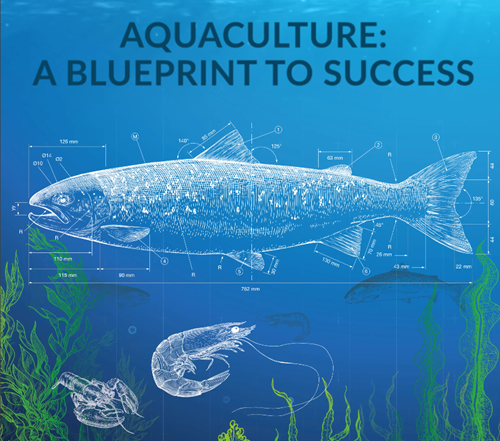Delving beneath the surface is key to subsea’s opportunity in aquaculture
SAIC's Director of Business Engagement, Sarah Riddle, in a feature article for Subsea UK Magazine:
It would be fair to say that the subsea sector has often been seen as energy-adjacent – historically speaking, usually connected with supporting the UK’s oil and gas industry in the North Sea. As the economy transitions towards a net zero future, subsea will have a critical role to play in this second revolution – in more ways than one.
Subsea technologies will undoubtedly be a vital part of de-carbonising the energy sector, by supporting the development of marine renewables and their key part in decommissioning oil and gas assets. However, the industry could play an equally important role in de-carbonising people’s diets, by helping to unlock growth in Scotland’s burgeoning aquaculture sector.


Read the full February issue here
Supporting the de-carbonisation of diets
By the end of the decade, estimates suggest the world will need to produce 70% more food to feed growing populations and meet rising living standards. This has to happen while using fewer resources and with a minimal environmental footprint.
As a highly efficient way of producing protein – in terms of CO2 emissions, water consumption, and feed conversion – aquaculture will be a crucial part of meeting that need. At the moment, just 2% of food for human consumption comes from the sea, with farmed salmon representing just 3.2 million tonnes of production, compared to 118.2 million and 107.1 million for pork and chicken respectively.
The opportunity is, therefore, huge for aquaculture. The farming of aquatic species in Scotland – ranging from mussels and seaweed to, of course, trout and salmon – has taken place for decades, yet the UK represents just 5% of the global salmon production figure.
Clearly, Scotland and the UK could make a greater contribution. In fact, that has been formalised with a target to sustainably double aquaculture’s economic contribution in Scotland to £3.6 billion by 2030, supporting 18,000 jobs. Around £200 million of capital investment is planned per year to help deliver that goal and new technology will account for a significant slice of that figure.
Greater scope for subsea technologies
The need for innovative new technologies has seldom been greater. Prior to the outbreak of Covid-19, the aquaculture sector was looking to more remote, higher energy areas to place new sites – an undertaking that comes with its own challenges. And, with the pandemic itself amplifying the need for remote working, the necessity for new ways of working and the tech that can support that has only become greater.
At the tail end of 2020, SAIC ran a series of webinars in partnership with Subsea UK to outline the opportunities for subsea companies in aquaculture. While a range of subsea technologies are currently employed in aquaculture – from remotely operated underwater vehicles (ROVs) and divers, to modelling, imagery and sensor systems – we were keen to emphasise that there is even wider scope for the subsea industry to positively contribute to aquaculture in the future.
As aquaculture pushes into new areas and embraces new technology and approaches, environmental inspection and monitoring, infrastructure deployment and maintenance, along with the ability to check fish for indicators such as biomass without handling will become increasingly important. Subsea companies are in a great position to support the sector in each of these areas and more.
A sector with unique dynamics
However, before that can happen, there are a range of factors that need to be taken into consideration. While the subsea sector has the benefit of having a track record in remote environments, through its work with oil and gas and marine renewables, aquaculture has its own nuances.
The first is the very different regulatory environment that the sector operates within. We work with living creatures and their health and wellbeing is of paramount concern. Any new technology used in pens needs to be suitably approved by the regulator and how it interacts with fish and existing technologies has to be clearly detailed.
There is also a misconception around the best way of approaching aquaculture. While the fish farming company itself might seem the place to start for technology adoption, the best entry point for the subsea community is more than likely in the supply chain. Collaborating with current suppliers to the industry, taking a full service – rather than a technology-specific, piecemeal approach – to fish farmers will be infinitely more valuable to their operations.
Finally, aquaculture perhaps more than many sectors, needs repeatability and confidence in new technology. From an inspection and maintenance point of view, fish farmers have to know that quality, standards, and confidence can be maintained without necessarily being on site. Reporting and diligence are, therefore, absolutely crucial.
Aquaculture is becoming increasingly led by technology, data, and insight – whether it is environmental sensing for site planning, visual checks of fish without handling, or intelligent assessment of infrastructure. Subsea companies can help the sector farm better and more insightfully, but to do that they need to understand aquaculture and focus on what it genuinely needs.
Read the magazine hereShare this
